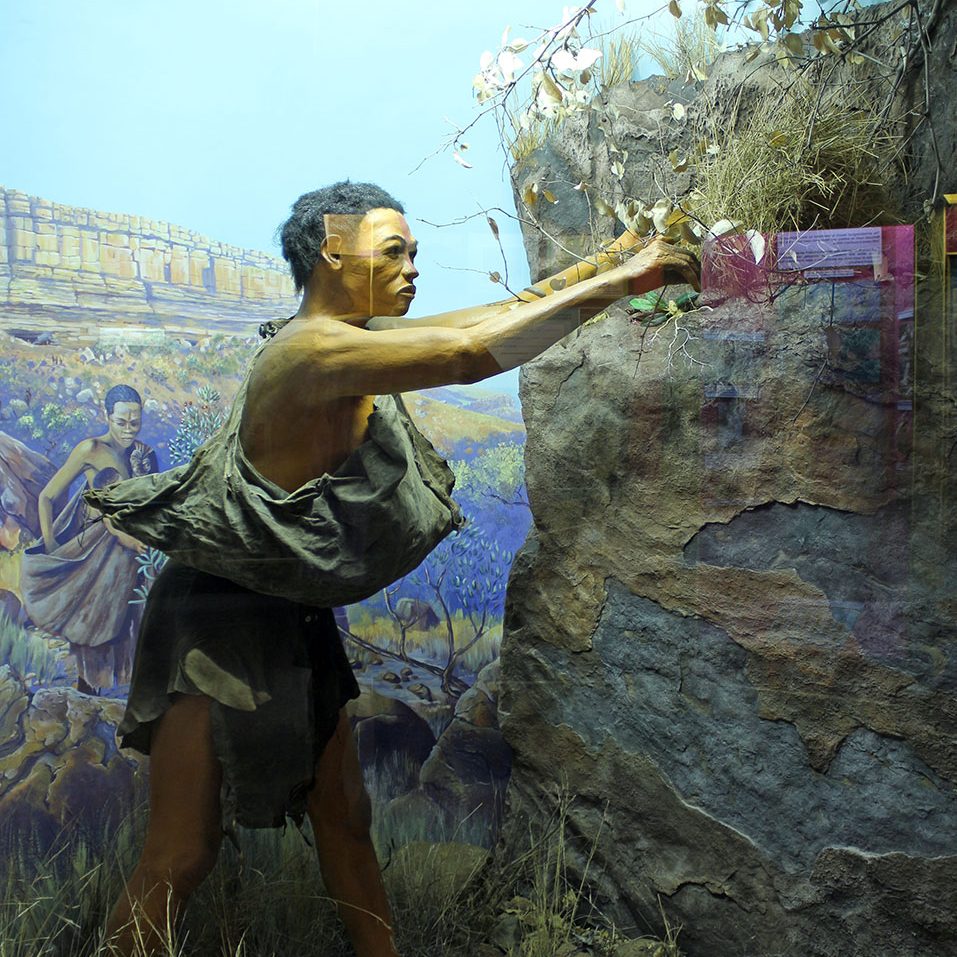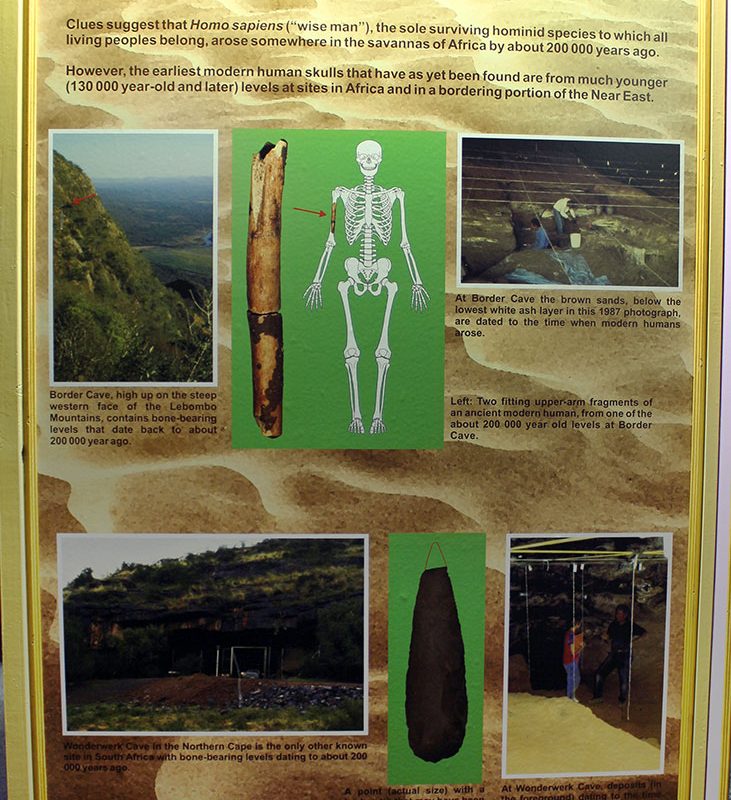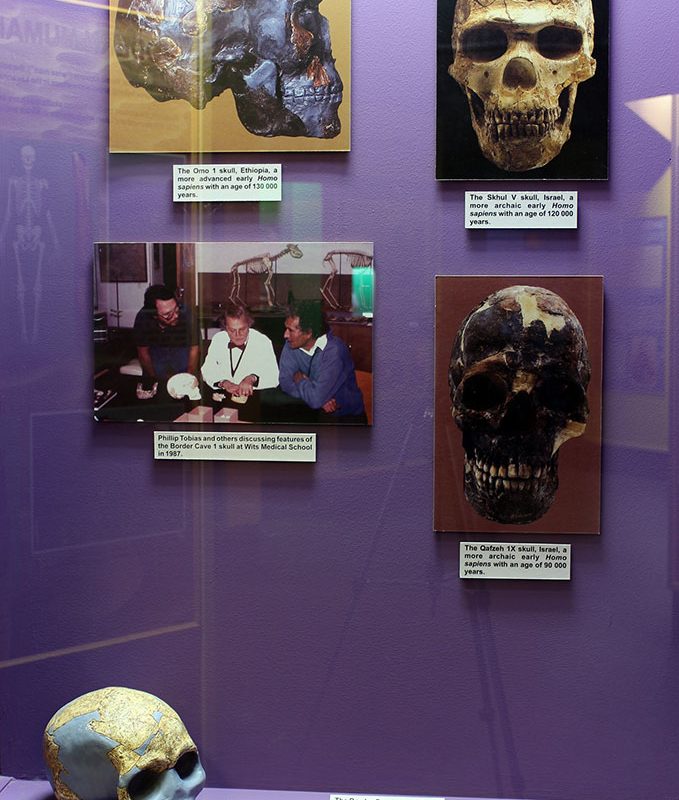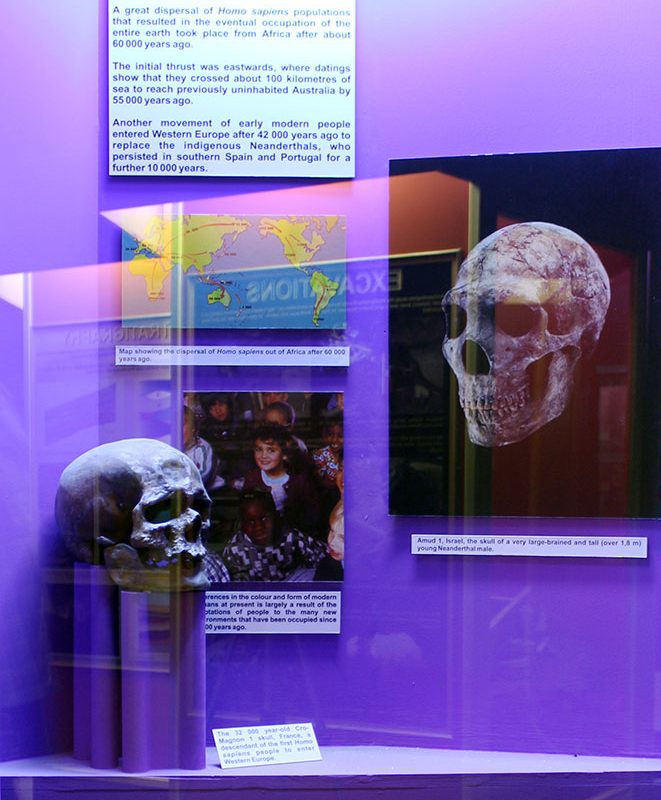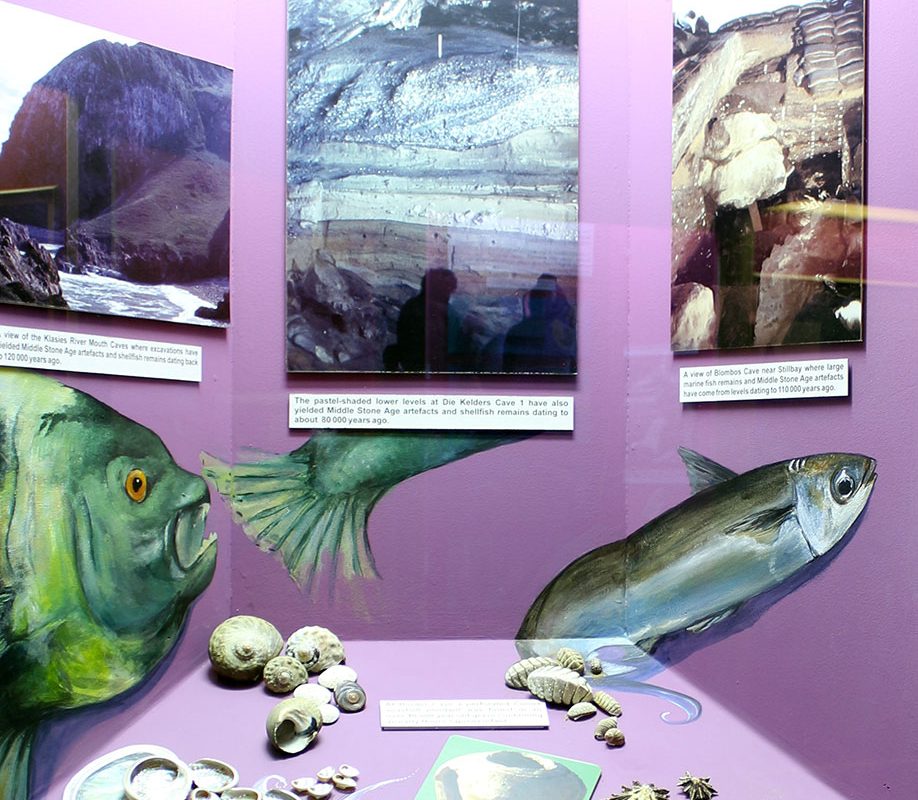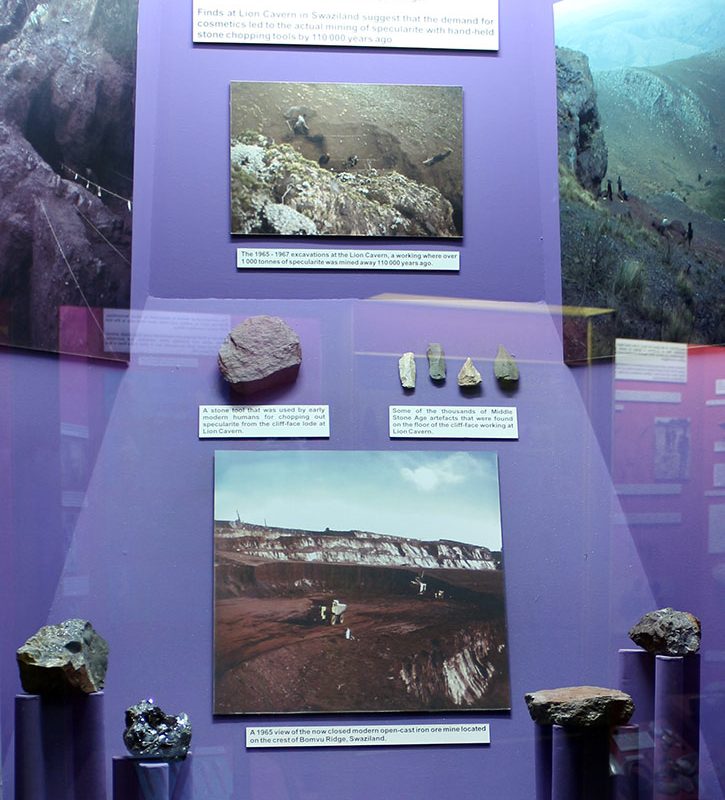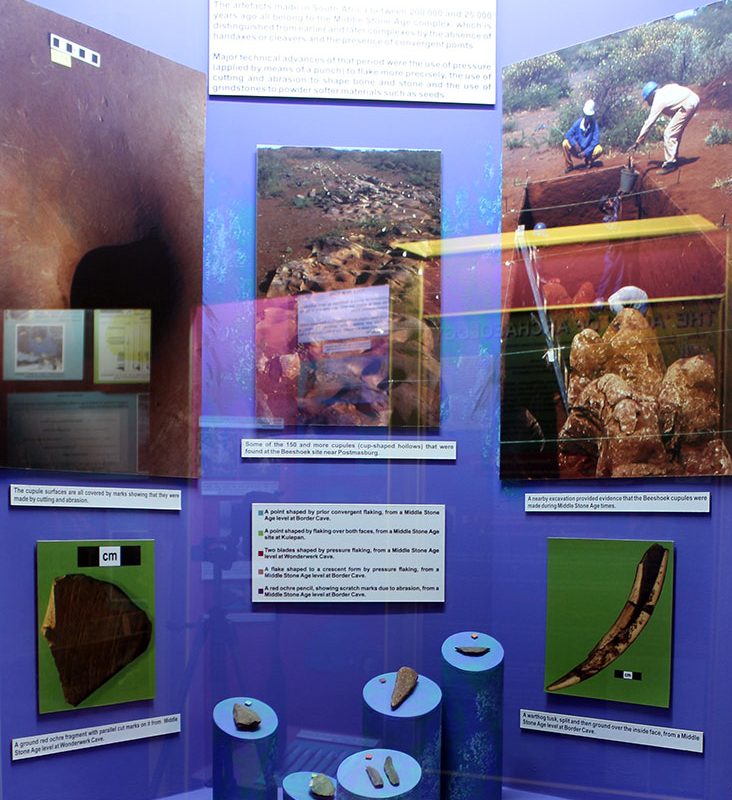Modern humans emerge
Genetic evidence shows that Homo sapiens (“wise man”), the sole surviving hominin species to which we all belong, arose somewhere in the savannas of Africa about 200 000 years ago.
Fossils of modern humans found so far in Africa and the Near East date back about 130 000 years. The stone artefacts made by early modern humans, dating to between 200 000 and 25 000 years ago, have been found at many sites in South Africa, including in the Vaal and Orange River valleys in the Northern Cape, and in the Kuruman hills.
A great dispersal of Homo sapiens populations that resulted in the eventual occupation of the entire earth took place from Africa after about 60 000 years ago. The initial thrust was eastwards, where datings show that they crossed about 50 kilometres of sea to reach previously uninhabited Australia by 50 000 years ago.
Another movement of early modern people entered Western Europe after 42 000 years ago to replace the indigenous Neanderthals.
Differences in the skin colour and form of modern humans is largely a result of their adaptation to the many new environments that have been occupied since 60 000 years ago.
Artefacts from Northern Cape sites dating between 200 000 and 25 000 years ago belong to what archaeologists term the Middle Stone Age complex. Stone tools were carefully flaked as points to tip spears, and as blades for cutting. Cutting and abrasion techniques were used to shape bone and stone. Grindstones appear for the first time, to powder softer materials such as seeds and pigments. These technologies allowed people to exploit a wider spectrum of environmental resources, including shellfish and fish, along the coasts. The first clear evidence for personal adornment and the burial of the dead comes from this time in South African sites. Recent research at Ga-Mohana Cave, outside Kuruman, shows that developments at the edge of the Kalahari were as significant as at coastal sites, at around 105 thousand years ago, in terms of evidence for modern human symbolic behaviour, and the use of ostrich eggshells for water containerization.
